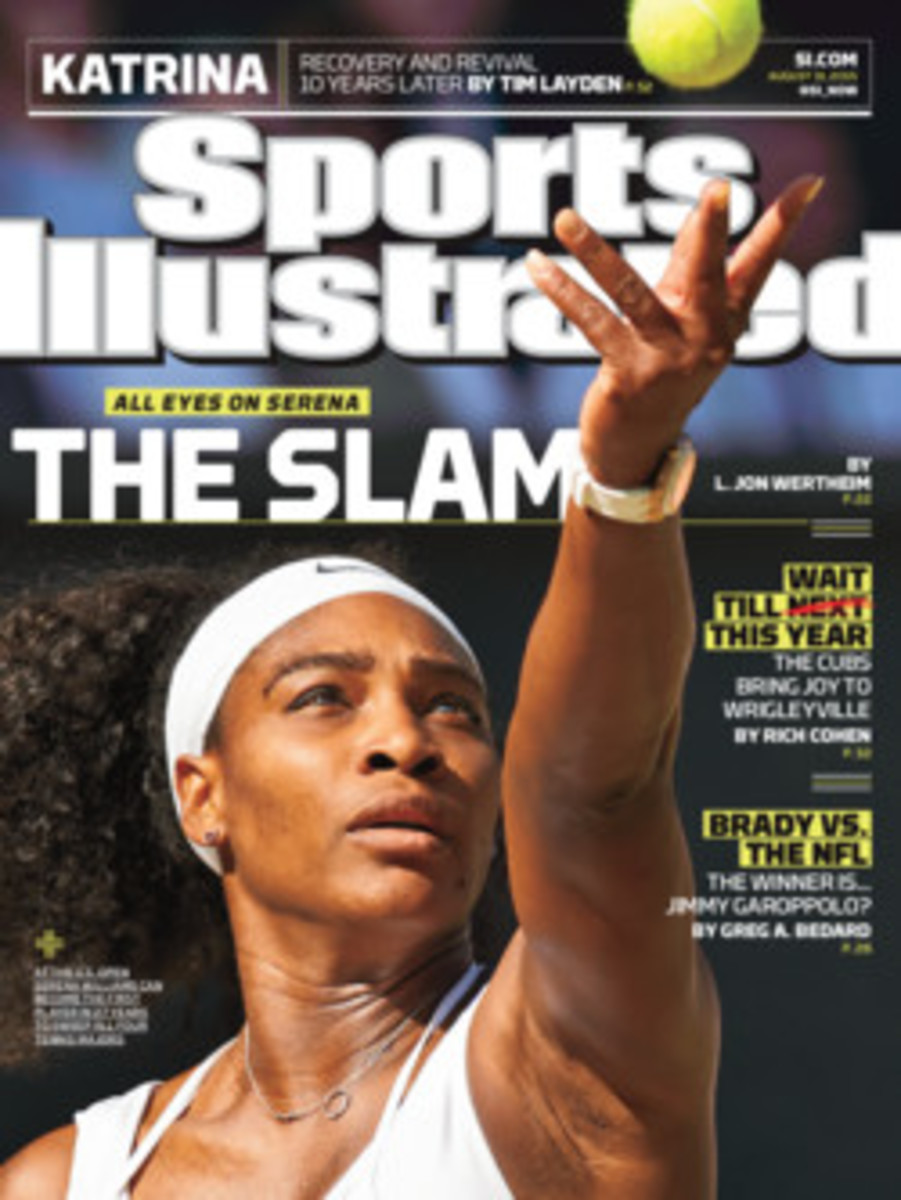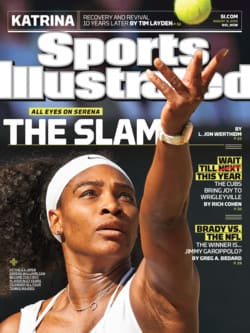
The Case for ... Chase in Cooperstown
WHEN RIGHT-ANKLE inflammation forced then Phillies second baseman Chase Utley to the disabled list on June 23, he carried MLB worsts in batting average (.179) and OPS+ (48), raising doubts about whether his career—and his Hall of Fame chances—were over. Yet while his traditional career numbers would seem to make Utley unworthy of a spot in Cooperstown, the advanced metrics suggest the 36-year-old second baseman has already done enough to earn enshrinement.
After returning from a 37-game absence, Utley (right) also proved he's far from finished, going on a 15-for-31 binge that generated widespread interest among contending teams with suboptimal second base situations. On Aug. 19 the Dodgers acquired Utley for two minor leaguers (superutilityman Darnell Sweeney and righty John Richy), ending his 13-season run in Philadelphia.
Through Sunday, Utley has 1,625 hits, 233 home runs, 142 steals and a .282/.366/.481 batting line, plus six All-Star selections, and he played a pivotal role in the Phillies' five straight postseason appearances from 2007 to '11. Those counting stats are suppressed in part because Utley, blocked at second base by Placido Polanco, didn't play regularly until age 26. And while he's glaringly short of awards, having won neither an MVP nor a Gold Glove, Utley was frequently a strong candidate for both.
From 2005 to '10, Utley led NL second basemen in Defensive Runs Saved and Ultimate Zone Rating four times apiece; none of the Gold Glovers at the position led in the years that they won. His overall contributions at bat, with the glove and on the bases as measured by Wins Above Replacement ranked him among the NL's three most valuable position players every year from 2005 to '09, yet his highest finish in NL MVP voting was seventh.
The advanced stats also paint a more favorable picture of his Cooperstown chances. My JAWS (Jaffe WAR Score) system attempts to identify worthy candidates by comparing each to the average Hall of Famer at his position. This is done by calculating the average of a player's career WAR and his peak total (defined as a player's best seven seasons). By that formula Utley rates as the 12th-best second baseman in history, two spots ahead of 2015 inductee Craig Biggio. Utley's 49.1 peak WAR is eighth among all second basemen, 4.7 wins above the average Hall second-sacker's 44.4; as with other short-career Hall of Famers such as Hank Greenberg and Ralph Kiner, that alone could justify enshrinement. Because Utley's 61.5 career WAR is 7.8 behind the average Hall of Fame second baseman's, his 55.3 JAWS is still a bit short of the 56.9 average of those 20 already enshrined at the position. But his recent rebound suggests that score can yet improve.
Still, Utley faces an uphill climb. Neither the BBWAA voters nor the various iterations of the Veterans Committee have elected any post-1960 position player who had fewer than 2,000 hits. Hall voters have long underrated candidates for whom OBP and defense form a crucial part of their value, such as Ron Santo (seventh in JAWS among third basemen) and Bobby Grich (seventh among second basemen, the highest outside the Hall).
It took 37 years after his retirement—and one year after his death—for Santo to be elected, in 2011, and Grich, 66, is still waiting for his Hall call. Utley should be helped by an evolving electorate that better understands DRS, UZR, WAR and JAWS. Still, continuing his resurgence for another season or two would help convince the remaining skeptics of what should already be clear: Chase Utley is a Hall of Famer.
12th
Utley's ranking among 2B in MLB history, according to JAWS
6
All-Star selections in his 11 full seasons
0
Post-1960 position players with fewer than 2,000 hits elected to the Hall
PHOTO
BOB LEVEY/GETTY IMAGES

